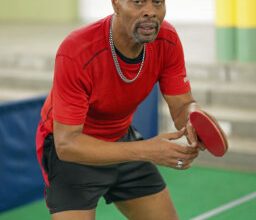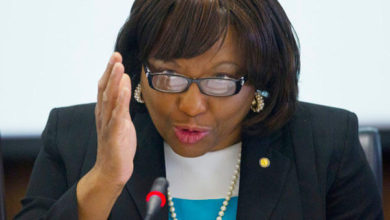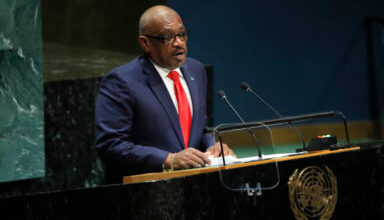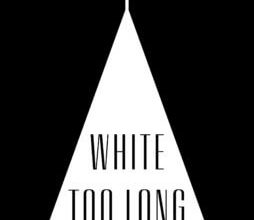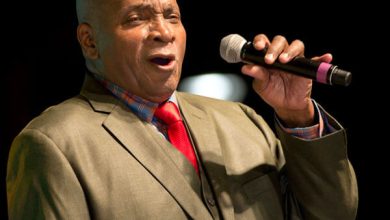Jamaicans split between ‘One Love’ and Royal ‘Stain’
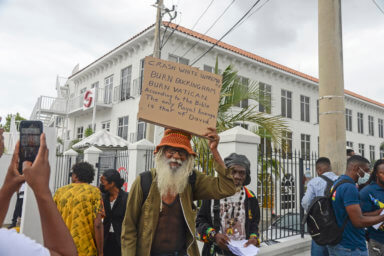
Segments of the Jamaican society were divided in welcoming Britain’s Prince William and Catherine Middleton, the duke and duchess of Cambridge to their independent, commonwealth nation recently.
Some openly riled, protested and demanded an apology and reparations for past indiscretions perpetrated against a majority of the population, while others publicly emboldened allegiance to the crown.
Despite the rift, throughout the three-day representation of Queen Elizabeth II 70th Jubilee Platinum anniversary by the Cambridges, neither group seemed discourteous in expressing free speech.
Whether frowning or fawning, each orderly expressed their opinions by attracting public notice to their cause which parallels the divide consistent with the Jamaica Labour Party and the People’s National Party, the two parliamentary governments which exchange control of the island.
Initially apprehensive to sever ties with the kingdom, the JLP seems ready to join their rival party’s long-standing consensus.
“They are our guests, and we will make them feel at home, but it’s not going to move our focus from the fact that an injustice was done to our ancestors, we seek reparations and we are focused on achieving that,” Olivia Grange, minister of Culture, Gender and entertainment told the Jamaica Observer.
At a meeting with the visiting royals, Prime Minister Andrew Holnes said: “There are issues here which are, as you would know, unresolved. But your presence gives an opportunity for those issues to be placed in context, put front and center, and to be addressed as best we can. Jamaica is, as you would see, a country that is very proud of what we have achieved. And we are moving on and we intend to attain, in short order, our development goals and fulfill our true ambitions and destiny as an independent, developed, prosperous country.”
In 1972, PNP leader Michael Manley proposed extrication from the crown and advocated to replace the queen with a local head of state.
Recently Mark Golding, the Opposition leader renewed the position saying: “The Opposition has been consistent in repeatedly calling on the Government to commence and diligently pursue, with bipartisan support, the constitutional process for Jamaica to become a republic by replacing the British monarch with a Jamaican as our Head of State.”
While Rastafarians and Maroons are reputedly most vociferous about severing ties with the British — whose slave ships transported their ancestors across the transatlantic into bondage — recently anti-colonial demonstrators known as Advocates Network rallied to express solidarity.
Reportedly, approximately 360 individuals protested at the British High Commissioner’s office in Kingston with placards demanding an apology for 300 years of slavery.
The same group presented a letter detailing the imbalance of wealth to descendants of British invaders and disproportionate poverty to African captives displaced from the continent.
“We see no reason to celebrate 70 years of the ascension of your grandmother to the British throne because her leadership, and that of her predecessors, have perpetuated the greatest human rights tragedy in the history of humankind,” an excerpt from the letter read.
The letter also accused the queen of doing “nothing to redress and atone for the suffering of our ancestors.”
Protesters brandished damning signs, shouted anti-colonial chants and lingered with media to explain why reparations and an apology might appropriately start a conversation for reconciliation. Many wore African print, head-wraps and bold colors of red, green and gold to identify their allegiance to African heritage.
Ironically, the fashion statement conflicted with reports in the British press that focused mostly on the glamorous appearances displayed by the royal couple during their Caribbean visit.
Reports were that on arrival to the Caribbean island, the duchess sported a long flowing lemon-gold dress, a deliberate nod to the island’s tri-color flag. She ‘stunned” at a gala dinner hosted by the queen’s representative governor general, paying homage wearing an elegant green gown, they claimed.
Purported to reflect the abundance of sunshine and the lush vegetation of the land, the banner’s black signifying hardship did not make the fashion report or the Jamaican runway.
Poet Mutabaruka addressed the hardships.
While protesting the visit he emphasized slavery endured by the people. The host of Cutting Edge, a radio talk show accused the prime minister of ignoring the tarnished history by inviting imperialists/colonials to celebrate their conquests.
Approximately 360 like-minded dissenters also offered similar critiques to the visit.
In contrast, the following day, a tour scheduled by the government reversed the previous sentiments with welcoming crowds reaching out to touch the royals. Staged at Culture Yard in Trench Town where Bob Marley resided with his wife Rita, the couple joined Rastafari Nyabingi drummers for a music session HRH the queen might have approved.
William’s father Charles had drummed beats on a visit to the Trench Town locale for the monarch’s golden jubilee. And social media disseminated photo reminders reflecting both generations jamming with captions reading ‘like father like son.’
There, the couple also reprised a ‘cool runnings’ scenario posing for pictures with bobsleigh drivers while seated inside a replica vehicle marked ‘Jamaica.’
Following the warm reception, the prince who will replace his father King Charles III borrowed from an address made in Barbados last November when the future king represented the crown during the nation’s transition to a republic.
“The appalling atrocity of slavery forever stains our history,” the prince said. “I want to express my profound sorrow. Slavery was abhorrent and it should never have happened.”
He stopped short of issuing an apology but ended with “one love,” a message synonymous with a Rastafarian, anti-colonialist who advocated for the oppressed and under-served.
Throughout history, numerous royals have visited Jamaica.
Queen Elizabeth II was first greeted with exuberance in 1953 when accompanied by Prince Philip, the Duke of Edinburgh.
At that time the Union Jack fluttered from buildings, politicians bowed, kneeled and voiced ‘God save the queen.”
The monarch made five more trips.
On the island’s attainment of independence in 1962, the queen was represented by her sister the Countess of Snowdon, Princess Margaret. She witnessed the lowering of the Union Jack and the hoisting of the nation’s black, green and gold banner.
Four decades later, her majesty’s eldest son and heir to the throne, Charles, the Prince of Wales received friendly receptions when he visited the island in 2000 and again in 2008.
Anne, Princess Royal of Edinburgh and the queen’s only daughter visited the island twice in 2005 and 2011.
Catch You On The Inside!

